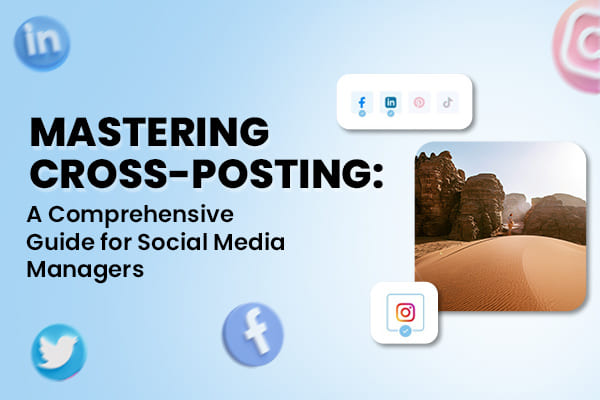
Everything You Need to Know About Cross-Posting on Social Media
Are you a social media manager looking to optimize your content distribution strategy and reach a wider audience across multiple platforms? If so, cross-posting could be the solution you've been searching for. In this comprehensive guide, we'll explore everything you need to know about cross-posting on social media and how to leverage it effectively to enhance your brand's online presence.
What is Cross-Posting?
Cross-posting, also known as syndication, refers to the practice of sharing the same content across multiple social media platforms. Instead of creating unique posts for each platform, cross-posting allows you to repurpose content and distribute it to a broader audience.
Benefits of Cross-Posting
1. Expanded Reach
By sharing content across multiple platforms, you can reach a larger and more diverse audience, increasing the visibility of your brand and driving engagement.
2. Consistent Messaging
Cross-posting ensures that your messaging remains consistent across all platforms, reinforcing your brand identity and core values.
3. Time Efficiency
Rather than creating separate posts for each platform, cross-posting allows you to save time and resources by repurposing existing content.
4. Improved SEO
Sharing content across multiple platforms can improve your search engine optimization (SEO) efforts, as it increases the likelihood of your content being discovered by users.
How to Cross-Post Effectively
1. Understand Your Audience
Before cross-posting content, it's essential to understand the demographics and preferences of your audience on each platform. Tailor your content to suit the unique characteristics of each audience.
2. Optimize Content for Each Platform
While cross-posting involves sharing the same content across multiple platforms, it's important to optimize the format and style of your posts to fit the specific requirements of each platform. For example, Instagram posts may require visually appealing images, while Twitter posts should be concise and engaging.
3. Use a Social Media Management Tool
To streamline the cross-posting process and ensure consistency across platforms, consider using a social media management tool like LiiftSocial. With features designed to simplify content distribution, scheduling, and analytics, LiiftSocial makes cross-posting a breeze for social media managers.
4. Monitor Performance
Track the performance of your cross-posted content using analytics tools provided by your social media management platform. Monitor metrics such as engagement, reach, and click-through rates to identify which posts are resonating with your audience and optimize your strategy accordingly.
Conclusion
Cross-posting is a valuable strategy for social media managers looking to maximize their reach and engagement across multiple platforms. By understanding the benefits of cross-posting and implementing best practices, you can effectively leverage this technique to enhance your brand's online presence and drive meaningful results. With the right approach and the best social media management tool by your side, you can master the art of cross-posting and take your social media strategy to new heights.
So, Why not start now?
Become a Premium Business with Liiftsocial
We can help you to Endure your Company for better Business Revenue.
